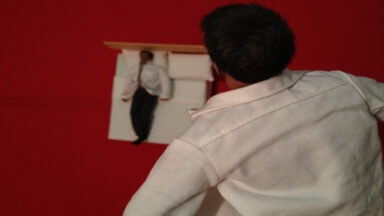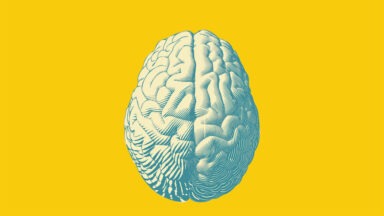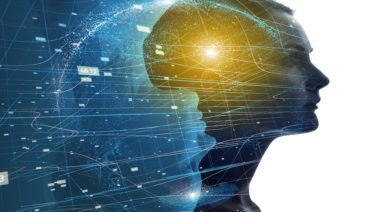How to Access Your Subconscious Mind in 4 Steps

“Logic can take you from point A to point B, but imagination can take you anywhere.” – Albert Einstein
How to Access your Subconscious Mind?
Exercise: Access your Subconscious Mind in 4 Steps
- Relax
Relaxation is challenging for many of us, but it’s the gateway to opening and moving deeper within ourselves. Find a place where you won’t be disturbed. Sit or lie down in a comfortable place. If you’re sitting, use a cushion or a folded blanket underneath to help your sitz bones relax the hip flexors and knees. If you’re lying down, roll your shoulder blades down your back to support the heart. Place the hands at your sides palms up, and let the legs and ankles splay out. Relax the eyes with a soft gaze or close them, whatever feels most comfortable for you.
- Listen
Listen to the sound of your breath. If your breath is fast and choppy, slow it down by taking long, slow breaths. This calms the mind. Listen to the sound of your heart beating in sync with the natural rhythms of your body. The more you listen and focus on the breath, the more you’ll arrive in the moment, at ease, letting go of thoughts.
- Find Guidance
Using a guided meditation or a yoga nidra recording can be a powerful way to encourage visualization and deeper meditation. Better yet, seek out a teacher. Guided meditations will help you set your intention for what you want to work on, from dealing with trauma to fulfilling dreams, getting rid of bad habits, etc.
Guided meditations can often be found free through many different apps. Another option is brain wave music, which moves the hemispheres of the brain into alpha, delta and theta states, which help to de-program old thought patterns.
- Be Consistent
The more frequent you practice, the better. Find the time of day that resonates with you most and stick to it. Want to complement your practice even more? Restorative yoga is incredibly beneficial for relaxation.
Accessing your subconscious can help change your harmful thought patterns and take you out of feeling like you’re living life on autopilot. With a regular practice, you’ll enjoy a new sense of well-being, passion and purpose.
Learn how to access the subconscious mind with this E-motion toolkit full-length video
In our day-to-day lives, we’re constantly in an alert, conscious state of mind. In the beta state, our brains are very active as we navigate through the day, sometimes feeling like we are on autopilot as we form our experiences. In this active beta state, our brain is over-stimulated, which in yoga is often referred to as “the monkey mind.” Here, everything comes to us as doubts, fears, to-dos, emotions, and it can really cloud our minds and trains of thought.
Studies have shown that in our conscious state, we’re only using between 1 and 5 percent of our brain’s resources. So if we’re only functioning at 1 to 5 percent, how are we really living our lives with true purpose? Where’s the other 95 to 99 percent?
The answer is found in our powerful subconscious, where the alpha, delta and theta states provide us with calm, deep relaxation and dreamlike states. The subconscious is where the magic happens, and where the imagination is stored. This state is where we can de-program our thought processes of doubt and fear, and where we tap into our authentic self without the judgment and criticism of our conscious state interfering.
Dr. Bruce Lipton of Stanford University says that the subconscious mind “ultimately casts the deciding vote” on how much abundance, happiness and success you will experience. He also claims that the subconscious is “one million times more powerful” than your conscious mind.
Research Confirms Intention Affects Structure of Water Pt. 1

Groundbreaking new studies have been published on the power of the mind to change the structure of water and even help stem cells grow.
Water, the most plentiful substance on Earth, has been shown to have the unique properties of recording and storing information. For this reason, it has recently been used as a target in the scientific study of mind-matter interactions.
Dr. Dean Radin is the Chief Scientist at the Institute of Noetic Sciences, or IONS, which has for the last 50 years been at the forefront of studying the frontiers of consciousness. Since 2006, Radin has led several studies on the effect of mental intention on water, culminating with a groundbreaking just-published experiment.
“We’re interested in mind-matter interactions where water is the target because we are composed mostly of water,” Radin said. “One of the questions then — when it comes to any kind of psychic healing, distance healing, energy medicine — maybe the reason why it works is because the mind can influence properties of water because then it would obviously influence all of us.”
“So, some years ago we did some studies to look at the claims of Dr. (Masaru) Emoto, who had become famous as the result of putting different kinds of mental intentions into water and then making little frozen crystals, and his claim was that if you think beautiful thoughts at the water as you make the crystals, the crystals will look beautiful, and if you think ugly thoughts, then you get ugly looking crystals,” Radin said.
When IONS conducted two rigorous studies to validate Dr. Emoto’s work, the scientists found that the effect held; the quality of the intention placed on the water directly affected the configuration of the crystals.
In another more recent study, Radin and his team explored the effect of intention on water as part of an experiment looking at energy healing.




































